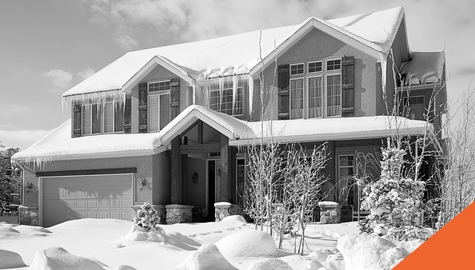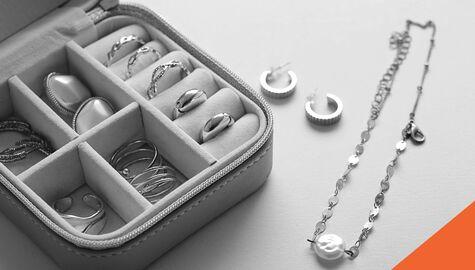Disaster Preparedness & Insurance
Wednesday, 28 October 2020
Even though forecasting can give us advanced warning of natural disasters, we often fail to prepare for them. Insurance rates increase because of an increased frequency of claims and repair costs, and as our climate continues to change, claims from severe weather conditions are on the rise. Both our families and our homes tend to be underprepared for disasters. You might think chance is on your side and that it could never happen to you, but as we see the climate shifting significantly you should talk with your broker about disaster preparedness and insurance.
Why Do We Need Disaster Preparedness?
Emergencies usually happen when we least expect them, but you can be better prepared to deal with unanticipated disasters by preparing your home and your family. The fact is most homes still lack the structural integrity to withstand strong winds, tornadoes and hail. We also deliberately rebuild in flooding zones and areas with high risk for wildfires. Some of these are out of your control, but a good home insurance policy and a disaster preparedness plan can help mitigate damage to your home and protect your family.
Why We Underprepare for Disasters
Disasters happen, yet we fail to prepare for them, or get properly insured. But why do we do this to ourselves? Here’s a little insight, and what we can do to shift our perspective.
The Bias of Myopia – we tend to see our immediate needs more clearly than needs in the distant future. It’s not in our nature to accept efforts or cost with delayed benefits or gratification. The problem is, if we don’t plan ahead, we are less likely to react well when the disaster is knocking at our door.
The Bias of Amnesia – the pain of negative experiences can often fade over time. This is where people deliberately rebuild their homes in a floodplain or high-risk area for wildfires, forgetting the challenges and damage they encountered in a previous natural disaster.
The Bias of Optimism – the “it won’t happen to me” mentality can often leave us underinsured and underprepared for disasters. This mindset can be especially detrimental when purchasing insurance. People often learn the hard way that they should have had more coverage.
The Bias of Inertia – if you’ve never experienced severe weather conditions or damage, you’re less likely to do anything about it, even purchase insurance pre-emptively.
The Bias of Simplification – we tend to leave out details and miss steps when we prepare for a disaster with a smaller probability. This may leave out critical protective measures left incomplete in your disaster preparedness.
The Bias of Herding – peer pressure doesn’t end in high school. When the people around you (friends, neighbours, family) are poorly informed and poorly prepared, you’re more likely to follow the crowd, which can lead to poor preparation for a natural disaster.
How does Insurance Help with Disaster Preparedness?
While home insurance can’t physically protect your home from a natural disaster, part of your disaster preparedness should include insurance to protect your finances. The amount you pay in premium pales in comparison to the financial assistance you would receive from your home insurance policy if you had to make a claim for your home. When you get a quote, ask your broker to specially outline what is covered and what isn’t, and be sure to carefully read your policy wording. Some coverages are optional, meaning means things like sewer backup, overland water coverage, and earthquakes may not be covered on your normal policy. If you aren’t sure about the coverage you have, speak to your insurance provider. You can also learn more about how to prepare your home for severe weather.
Make a Disaster Preparedness Kit
Even though you can rely on your insurance provider to help you financially recover from a natural disaster, you should also have a disaster preparedness plan when an emergency arises. It may take up to 72 hours for emergency workers to get to you in severe weather conditions or community emergency situations. For these times, it’s crucial that you are prepared to take care of your loved ones by being self-sufficient for at least 72 hours.
- Be informed – know the risks in your area (tornadoes in Ontario, earthquakes in BC, blizzards in the north), and also recognize the risk of power outages and industrial or transportation accidents. The Government of Canada website has a lot of helpful information about your location and potential emergencies.
- Make a plan – it only takes about 20 minutes to make your disaster preparedness plan; it’s worth the time to protect your loved ones. Plan how to contact each other in an emergency and have a rendezvous location. Follow this guide to get started.
- Get an emergency kit – this should include basic supplies to be self-sufficient for 72 hours – water and purifying method, non-perishable food, flashlights, radio, batteries, first aid kit, emergency contact information, prescription medication if needed, tools, blanket
Even though it’s not a fun topic to discuss and you may think it unlikely that you will ever face these types of emergencies, having a disaster preparedness plan can save lives! You can also live with peace of mind knowing you and your family are prepared in severe situations. Make sure home insurance and life insurance are a part of your disaster preparedness plan. If you aren’t sure of your coverage, or want to get a quote, get in contact with one of our brokers here.



